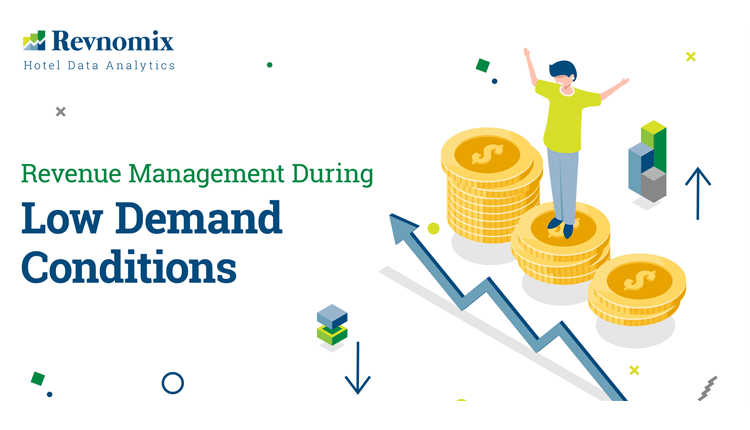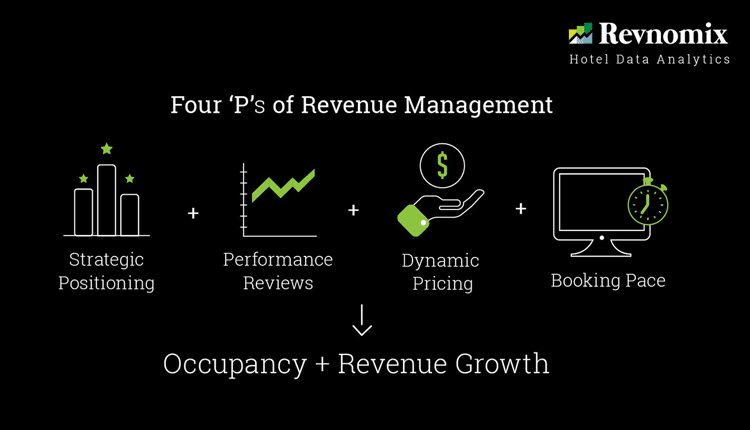Low demand periods are a challenge every hotel faces — whether due to seasonal dips, economic shifts, or market disruptions. However, these challenges also present a unique opportunity to refine strategies, rethink pricing, and focus on long-term profitability. With the right Revenue Management approach, hotels can maintain a healthy flow of bookings and optimize revenue even when travel slows down.
Revenue Management Approaches That Make a Difference
Effective Revenue Management is the foundation for sustaining performance during periods of low demand. By using accurate data, flexible strategies, and smart tools, hotels can still drive occupancy and profitability.
Key steps include:
1. Evaluating historical booking data and market behavior.
2. Aligning rates with real-time market dynamics.
3. Using Revenue Management Software to automate pricing and forecasting.
At Revnomix, we empower hoteliers to make proactive, data-driven decisions using customized Revenue Management techniques tailored to your unique business needs.
Revenue Management Techniques to Stay Ahead
Adopting advanced Revenue Management tools and insights can be a game-changer during lean seasons. Instead of relying on flat rate cuts, hotels can design more nuanced pricing and value propositions.
Some effective methods include:
1. Implementing Dynamic Pricing Strategies to adjust rates based on current demand and competitor pricing.
2. Using Demand Forecasting models to anticipate booking trends and plan room availability.
3. Leveraging Yield Management to maximize revenue from limited inventory during unpredictable periods.
Our Revenue Management Software at Revnomix enables seamless control over these variables, ensuring that every decision is backed by market intelligence and technology.
Create Value-Driven Packages
Rather than offering steep standalone discounts, build bundled packages that highlight your hotel’s unique experiences. Guests are more likely to book when they perceive additional value.
Here’s how to do it:
1. Combine room nights with perks like free breakfast, spa credits, or shuttle service.
2. Offer attraction passes, late check-outs, or local discounts to enhance appeal.
3. Ensure clear messaging about savings versus booking services separately.
These packages help drive non-room revenue while maintaining the average daily rate.
Smart Discounts With Fencing
Discounts can be powerful, but only when targeted and fenced. Avoid blanket discounts that devalue your brand.
Use these tactics instead:
1. Apply discounts to specific age groups, corporate clients, or regional markets.
2. Use limited-time offers to create urgency.
3. Ensure all discounts have conditions or added benefits that protect revenue integrity.
Dynamic Pricing Strategies can help hotels remain attractive to different guest segments while maintaining rate integrity.
Upselling & Upgrading for Higher Value
Encouraging guests to enhance their stay can increase revenue while improving the guest experience.
Focus on:
1. Upselling premium rooms or suites during the booking process.
2. Offering in-stay upgrades with discounts or added perks.
3. Training staff to recognize upsell opportunities during check-in.
Yield Management ensures that every available room type is sold to the right guest at the right price.
Incentivize Longer Stays
Length-of-stay (LOS) promotions encourage guests to extend their bookings, increasing occupancy during low-demand stretches.
Best practices include:
1. Offering progressive discounts for multi-night stays (e.g., stay 3 nights, get 15% off).
2. Packaging longer stays with value-added services.
3. Promoting remote work or “staycation” deals to local travelers.
Price Optimization through smart software helps tailor these offers to your market.
Remove Restrictive Policies
Flexibility is key in uncertain times. Rigid booking conditions can discourage potential guests.
Instead, consider:
1. Removing minimum stay requirements.
2. Allowing flexible check-in/check-out timings.
3. Easing cancellation or rebooking policies.
Guests value freedom, and flexible policies can directly impact booking conversions.
Collaborate With Competitors Strategically
Building healthy relationships with local competitors may seem counterintuitive — but it can open doors to mutual referrals, bundled promotions, or city-wide events.
Tips for collaboration:
1. Join hotel associations or local tourism boards.
2. Create joint promotions for festivals or events.
3. Share market insights or best practices for mutual benefit.
Book Early, Avoid Panic Discounts
Encourage early bookings by offering lower rates far in advance. This creates a predictable occupancy base and reduces the need for last-minute discounts.
Remember:
1. Set competitive rates for future dates to drive long-lead bookings.
2. Use forecasting tools to assess how far out travelers are booking.
3. Avoid deep discounts close to arrival dates — they train customers to wait.
Leverage Online Reviews and Social Proof
In today’s digital-first world, your social reputation can be your strongest marketing tool — especially during low-demand periods.
Ensure you:
1. Actively maintain and respond to Google Reviews.
2. Post guest experiences and promotions on Instagram and Facebook.
3. Encourage happy guests to leave positive feedback on social platforms.
Strong ratings and engaging content improve visibility and trust — helping drive bookings even when demand is low.
Conclusion:
Low demand doesn’t have to mean low performance. With thoughtful Revenue Management practices, data-driven software, and strategic marketing, hotels can turn these challenges into profitable opportunities.
At Revnomix, we help you build a resilient, adaptive strategy for your property. From Dynamic Pricing Strategies to Demand Forecasting, our Revenue Management Software gives you the insights and tools needed to outperform the competition — in any season.
Ready to optimize your revenue strategy? Get in touch with the experts at Revnomix today.







